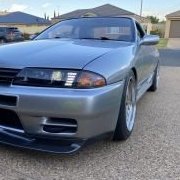Converting To Haltech Platinum Pro Plug-In
Announcements
-
Similar Content
-
Latest Posts
-
Thanks, yeah the yelsha just uses a cheaper (non bosch) sensor i believe. if thats the case then the way i had the wiring the first ime should be correct. definitely going to have to consult the pin locations for the ECU. otherwise we are all just guessing!
-
Thank you, this was comprehensive and I consider myself an expert on the subject now. Regards, The Internet.
-
For the NZ wiring kit (which Yelsha copied) the black wire is + and the white is -. For me (according to my wiring notes) I have the black (+) connected to pin B1 and white (-) pin B5. Hope that helps?
-
Went home at lunch and swapped the white and black around and still nothing. When i get on the laptop later today or tomorrow i'll see which pin leads to what colour wire (have a wiring specialities harness) That should clear up any confusion hopefully.
-
Nah. Any decent third party diagnostics unit should be able to talk Consult and all the other non-OBD protocols from back in the day. It's only 25 years since OBD started taking over. There's many cars from that ear still on the road. My mechanic's diag terminal is plenty able to talk to the other CUs in my car. Well, those that are still present, anyway. That's probably only the HICAS CU, as there never was an ABS or TCS or SRS CU, and the TCU went in the bin 25 years ago.
-






Recommended Posts
Create an account or sign in to comment
You need to be a member in order to leave a comment
Create an account
Sign up for a new account in our community. It's easy!
Register a new accountSign in
Already have an account? Sign in here.
Sign In Now